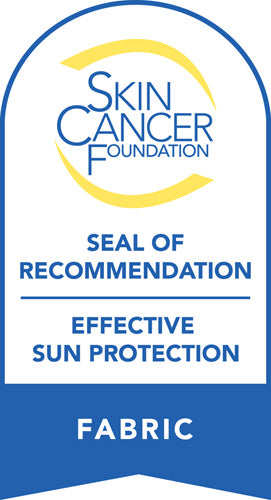The ABCs of Sun Safety for Your Little Ones
Did you know that having just 5 or more sunburns doubles your risk of being diagnosed with melanoma? The same goes for your little ones, which is why sun safety is so important — no matter when they're going outside.
But what does sun safety look like? Where do you even begin? Luckily, we're here to help.
Read on to learn the basics of sun safety for your little ones.
Begin With the Basics
Sunscreen is safe to go on a baby's skin as early as six months old — unless zinc-oxide is the only active ingredient. After six months, be sure to apply sunscreen 20 minutes before sun exposure and then reapply every 2 hours.
It's best to use lotion instead of spray until your little ones are older.
A baby's skin can absorb more chemicals than an adult or even an adolescent's skin can. Products with zinc-oxide listed are safe for your baby and are also effective at blocking out the sun's rays.
Other ways to block out UVA and UVB rays include protective clothing and staying out of direct sunlight.
What Is the Difference Between UVA and UVB?
UVA stands for Ultraviolet A, and UVB stands for Ultraviolet B. UVA rays work to tan the skin while UVB rays lead to sunburn.
UVA rays are capable of penetrating deeper into the skin than UVB rays and are 30-50 times more prevalent than UVB.
Both, however, are bad for the skin. Whether it's a tan or a burn, skin cells have been damaged by radiation from the sun.
What Does SPF Stand For? Is a Higher Number Necessary?
Sun protection factor — or SPF — protects against UVA and UVB rays. The higher number, the greater the protection.
It is important to note, however, that after a certain number, the difference in protection seems to shrink. For example, SPF 15 can block up to 93 percent of UVB rays, but SPF 30 can block up to 97 percent.
Doctors don't often recommend anything higher than SPF 50 unless someone has a photosensitive disease, like lupus.
What Should I Look for in a Sunscreen?
Did you notice that these sunscreens only block UVB rays, though? To ensure that you're protecting your little one from UVA and UVB rays, make sure you get a sunscreen that says "broad-spectrum" on the bottle.
If your child is going to be in the water, make sure you're using a sunscreen that says "water-resistant," and be sure to reapply every 40 minutes. If you find a label that says "very water-resistant," that number goes up to 80 minutes.
Remember, though, that no sunscreens are waterproof. They all wash off at some point and are always going to need to be reapplied.
Are Certain Sunscreens Better Than Others?
Besides opting for a reef-safe lotion, there are no sunscreens that are better to use from the neck down than others. The deciding factor is going to be what your child prefers to use, and what they won't make a fuss about putting on.
What does "reef-safe" mean though? Simply put, reef-safe sunscreens omit the ingredients oxybenzone and octinoxate. These two chemicals are harmful to coral reefs and can lead to sunscreen-induced bleaching.
Instead, opt for mineral-based sunscreens that have zinc oxide and titanium dioxide. Not only is zinc oxide safe for your little one's skin, but it's better for the ocean as well.
Nowadays, companies are going to label their products as "reef-safe," but you should always check the label as an extra precaution.
Remain Wary of Myths
When it comes to sunscreen, there are tons of myths and fallacies out there that you should be aware of.
The two biggest myths are not needing sunscreen on overcast or cloudy days and not having to wear sunscreen if your family's skin is dark. Both are not true.
On cloudy days, your little ones may actually be more susceptible to sunburn because they're more likely to stay outside for a longer period of time.
Although the chances of skin cancer in Black, Latino, and Asian families are lower than they are in White families, anybody can get skin cancer. In fact, it's often more dangerous in those with darker skin because it can go undetected for a longer period of time.
Are There Other Routes of Sun Protection I Can Take?
While there are many options for sun safety for kids out there, the easiest for you and your little ones is going to be protective clothing. Once the clothing is on, your child doesn't have to worry about sunscreen and neither do you!
You can also work to keep your little one out of the sun between 10 a.m. and 4 p.m. since that's when the sun's UVB rays are the strongest.
However, investing in a quality swim shirt for your little one is a great way to always be sure they're protected from the sun.
Other protective clothing for your little ones includes sunglasses and a wide-brimmed hat to protect their head, ears, eyes, and even lips, as all those can get sunburnt as well!
Remember the Importance of Sun Safety for Your Little Ones
Remembering these sun safety tips will help your little one stay safe, happy, and healthy when they're in the sun. We know that accidents sometimes happen, and sunburns can sometimes come about, but remaining diligent while your child is playing outside can save them a lot of pain, now and later on in life.
Sun safety is the key to happy and healthy skin, no matter your child's age.
If you're interested in sun-protective clothing for you or your children, take a look at our options today!



